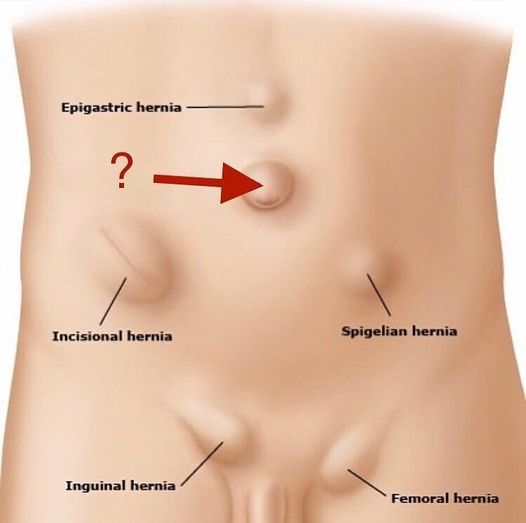A hernia is a common medical condition that affects more than 700,000 Americans each year. It can occur when tissue from inside the body bulges through the wall of muscle where it lives.
Generally, hernias appear in the abdomen or groin and bulge out through the belly button area, abdomen or along the incision sites from previous surgeries. While not all hernias can be prevented, some can.
Signs and symptoms
Hernias may be detected on routine physical examination, or patients with hernias may present because of a complication associated with the hernia.
Characteristics of asymptomatic hernias are as follows:
- Swelling or fullness at the hernia site
- Aching sensation (radiates into the area of the hernia)
- No true pain or tenderness upon examination
- Enlarges with increasing intra-abdominal pressure and/or standing
Characteristics of incarcerated hernias are as follows:
- Painful enlargement of a previous hernia or defect
- Cannot be manipulated (either spontaneously or manually) through the fascial defect
- Nausea, vomiting, and symptoms of bowel obstruction (possible)
Characteristics of strangulated hernias are as follows:
- Patients have symptoms of an incarcerated hernia
- Systemic toxicity secondary to ischemic bowel is possible
- Strangulation is probable if pain and tenderness of an incarcerated hernia persist after reduction
- Suspect an alternative diagnosis in patients who have a substantial amount of pain without evidence of incarceration or strangulation
When attempting to identify a hernia, look for a swelling or mass in the area of the fascial defect, as follows:
- For inguinal hernias, place a fingertip into the scrotal sac and advance up into the inguinal canal
- If the hernia is elsewhere on the abdomen, attempt to define the borders of the fascial defect
- If the hernia comes from superolateral to inferomedial and strikes the distal tip of the finger, it most likely is an indirect hernia
- If the hernia strikes the pad of the finger from deep to superficial, it is more consistent with a direct hernia
- A bulge felt below the inguinal ligament is consistent with a femoral hernia
Characteristics of various hernia types include the following:
- Inguinal hernia – Bulge in the inguinal region or scrotum, sometimes intermittent; may be accompanied by a dull ache or burning pain, which often worsens with exercise or straining (eg, coughing).
- Spigelian hernia – Local pain and signs of obstruction from incarceration; pain increases with contraction of the abdominal musculature.
- Interparietal hernia – Similar to spigelian hernia; occurs most frequently in previous incisions.
- Internal supravesical hernias – Symptoms of gastrointestinal (GI) obstruction or symptoms resembling a urinary tract infection.
- Lumbar hernia – Vague flank discomfort combined with an enlarging mass in the flank; progressive protrusion through lumbar triangles, more commonly through the superior (Grynfeltt-Lesshaft) triangle than through the inferior (Petit); not prone to incarceration.
- Obturator hernia – Intermittent, acute, and severe hyperesthesia or pain in the medial thigh or in the region of the greater trochanter, usually relieved by thigh flexion and worsened by medial rotation, adduction, or extension at the hip.
- Sciatic hernia – Tender mass in the gluteal area that is increasing in size; sciatic neuropathy and symptoms of intestinal or ureteral obstruction can also occur.
- Perineal hernias – Perineal mass with discomfort on sitting and occasionally obstructive symptoms with incarceration.
- Umbilical hernia – Central, midabdominal bulge.
- Epigastric hernia – Small lumps along the linea alba reflecting openings through which preperitoneal fat can protrude; may be adjacent to the umbilicus (umbilical hernia) or more cephalad (ventral hernia [epiplocele]).






